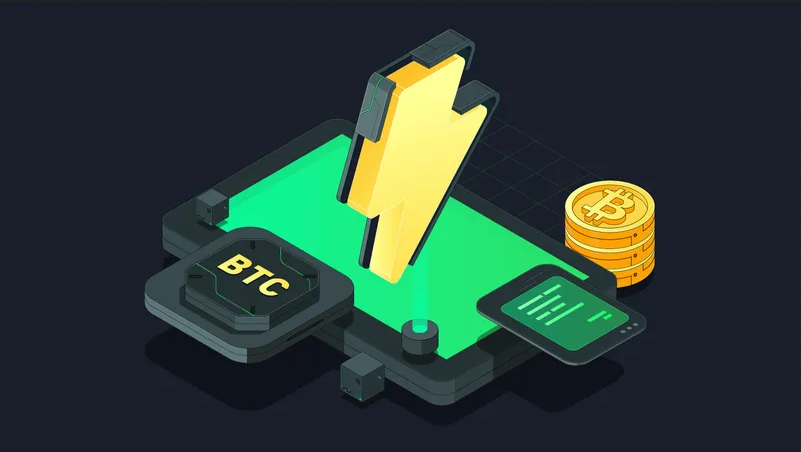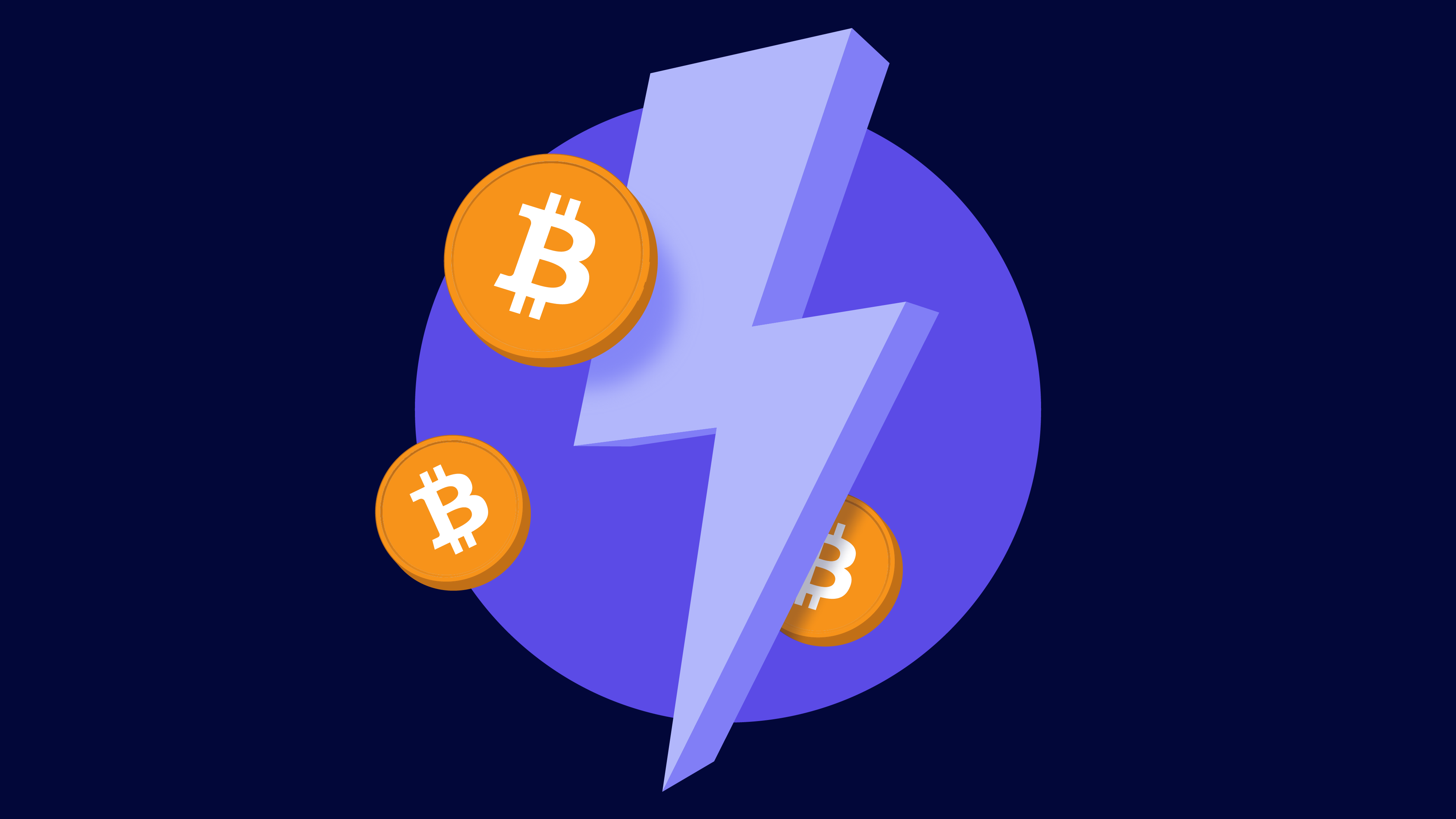
The Bitcoin Lightning Network makes BTC a quick and cheap way to pay—no waiting for block confirmations and no crazy fees for coffee. Lightning is the «express lane» built on top of Bitcoin if you’ve ever been annoyed by its slow on-chain speed or rising miner fees. This is a clear, user-friendly guide to how it works, how much it will cost, how to get started, and where Lightning works best and worst.
What is Lightning (in one minute)
Bitcoin has a «layer 2» network called Lightning. Two people open a payment channel with a single on-chain transaction instead of recording every small payment directly on the blockchain. They then send near-instant payments to each other (and others) off-chain. After they finish, they can close the channel with another on-chain transaction that settles the last balance. Most of the time, activity stays off-chain, so payments are quick, cheap, and can go through a network of channels to reach almost any Lightning user.
How Money Actually Moves
Think of Lightning as a set of connections between people and services:
- You (A) open a channel with a node (B). B has a channel with your friend C as well.
- Routing: The network finds a way (A → B → C) to get the money to your friend. Using cryptographic tricks (HTLCs), money moves through channels in small pieces, so either the whole payment goes through or nothing moves.
- Invoices or Addresses: You usually scan a Lightning invoice, which is a QR code with the amount, a description, and hints about the route. It feels like email with «LNURL» or «Lightning Address» (like alice@pay.domain).
The result is that payments go through in milliseconds to seconds, with very low fees.
Fees: What You’ll Really Pay
Lightning fees are not the same as miner fees on the chain. They are different for each route and usually have two parts:
- Base fee: Usually nothing or a small amount of a satoshi (sat).
- A small percentage of the amount, like a few ppm (parts per million), is the proportional fee.
For a small purchase, like a €5 coffee, fees are usually less than one cent, and sometimes even less than one cent. Two things to keep in mind:
- Costs of channel management: Opening and closing channels costs the same as normal on-chain fees. If you use a custodial wallet and only use it occasionally, you don’t have to worry about this. Your provider takes care of the channels. If you manage your own channels, open them when fees are low.
- Routing problems: If there isn’t much liquidity along the way, a payment may try a few different routes before it goes through, which adds a little bit of time and fees. Good wallets try again on their own.
In short, Lightning’s fees for each payment are very low compared to on-chain or card networks for people who make a lot of small payments.
Custodial vs. Non-Custodial Wallets
Custodial wallets are wallets where a provider keeps the keys and channels for you.
- Pros: You can start right away, there is no channel management, backups are easy, and for beginners, the UX is usually the best.
- Cons: You depend on the provider (counterparty/custody risk), there may be KYC/geofencing, and your privacy depends on them.
Wallets that don’t hold your money (you have keys and might be able to manage channels automatically)
- Pros: You control your money; you have more freedom and privacy; you can choose your nodes.
- Cons: It takes a little more time to set up; channel liquidity and backups are important; you may have to pay on-chain fees to open channels from time to time.
Look for things like support for LNURL and Lightning Addresses, the ability to convert fiat, contact lists, clear fees, and automatic channel management («autopilot,» «splicing,» and «zero-conf» options).
How to Get Started (Quick Path)
- Choose a wallet: custodial if you want no problems, non-custodial if you want to be in charge.
- Put money into it: Send BTC to it on-chain or via Lightning from an exchange or wallet that lets you withdraw Lightning.
- Try a micro-payment: pay a friend a few sats, buy a digital article tip, or give money to a site that works with Lightning.
- Level up: If you don’t have a custodian, try opening a channel to a well-connected node. If you can, try splicing (changing the size of the channel without closing it completely).
- Make sure to back up correctly: Keep your seed safe, and for Lightning, follow your wallet’s instructions to keep your channel backup/static channel backup file safe as well.

Where Lightning Shines
- For everyday expenses like coffee, transit, and small online purchases, there are no or very low fees and the speed of a tap.
- Micropayments: giving creators tips, paying for each article, streaming sats for podcasts, or paying for content behind paywalls.
- Cross-border: Send money to people all over the world in seconds. If their service supports it, they can keep the sats or convert them locally.
- Benefits for merchants: lower fees than cards, instant settlement (no chargebacks), and programmable receipts and invoices.
Problems and Limitations in the Real World
- It matters how much liquidity channels have going in and out. Good wallets take care of this, but big or strange routes might fail and try again.
- Custody trade-offs: The easiest apps are custodial, which means they have a great user experience but you have to trust them.
- There are still fees on-chain: It costs miners money to open and close channels, and if there is a lot of on-chain congestion, it can cost more to set up in the first place.
- Refunds and partials: Not as standardized as card networks (which are getting better), but still not as advanced for customer service.
- Merchant coverage is getting better, but it’s not everywhere yet. Some areas have more Lightning than others.
Things to think about when it comes to privacy
Lightning is better than putting every spend on a public chain when it comes to privacy, but it’s not perfect. Routing nodes only see some of the information, while custodial providers can see what you do. To keep your information private, use reputable non-custodial wallets, connect to your own node (if you’re advanced), and don’t use the same static invoices over and over again. Instead, use LNURL-Pay or Lightning Addresses that send you new invoices for each payment.
Lightning, on-chain, and other options
- On-chain Bitcoin: Best for big or rare transfers; slow and expensive for small purchases during busy times.
- Lightning: Almost instant, very low fees; great for making small to medium payments often.
- Other L2s and alt networks: Some altchains let you make cheap payments, but you lose the security of Bitcoin. Lightning keeps you in the Bitcoin world.
A lot of people do both: they keep a larger balance on-chain (cold storage) and a smaller balance on Lightning (hot wallet) and add to it as needed.
How to Pay Like a Pro
- Start with a small test: Send a few sats to make sure the route/wallet works, and then send more.
- Keep an eye on liquidity cues: If a payment doesn’t go through, try again; you might want to split a big payment or add more liquidity.
- Be aware of when invoices expire. Lightning invoices usually expire in minutes or hours. If one fails, ask for a new one.
- Make sure your setup is safe: For seed storage, use a hardware-secured wallet. To keep your device safe, turn on PIN/biometrics.
- Plan refills wisely: When on-chain fees are low, add more money to your Lightning wallet. Look for wallets that support splicing to make channel adjustments easier.
The Bottom Line
Lightning changes Bitcoin from «digital gold you slowly move» into real money that you can use. For everyday users, it gives payments what they need: speed, dependability, and low fees, all while staying true to Bitcoin’s core values. Get a wallet that is easy to use, make a few small payments, and keep good backups. Once you get the hang of it, paying with Lightning feels as natural as tapping a card. The only difference is that it settles in Bitcoin almost instantly and almost everywhere it is supported.